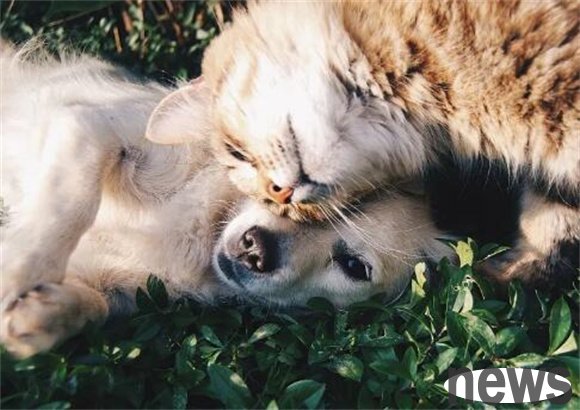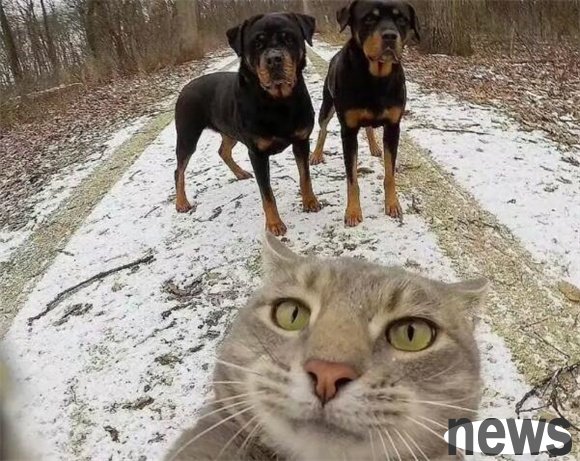Did you notice that the trend of raising cats in today's society has quietly surpassed raising dogs and has become the choice of more people? According to data disclosed in the authoritative white paper of China's pet industry, the proportio...
Did you notice that the trend of raising cats in today's society has quietly surpassed raising dogs and has become the choice of more people?
According to data disclosed in the authoritative white paper of China's pet industry, the proportion of cat owners among pet enthusiasts has approached 60%, which significantly exceeds that of dog owners. This trend is not only reflected in pet breeding preferences, but also has a profound impact on the development of the pet service industry.
As of the end of October 2022, about 70% of pet hospitals nationwide have adapted to market demand and added specialized services. The most prominent of them is feline specialized, accounting for as high as 50%, demonstrating the significant position of cats in the field of pet medical care.
It can be seen that cats have jumped to the top of the favorite cute pets of the people. With their unique charm, they have deeply integrated into thousands of households and become indispensable family members and are loved and cared for by people.

On the one hand, it is because raising a cat is really convenient, so you don’t have to take it out for a walk like a dog. You just need to prepare cat litter, cat food and water, and give it a favorite toy. It can be very excited by being alone at home.
And raising a dog requires you to take it out for a walk every day, and it requires people to accompany you for a long time, and the financial cost of raising a dog is indeed greater than that of raising a cat.
So from a psychological perspective, why do people like to keep cats?
There are more people raising cats than dogs, why?
Follow me and take you to learn more interesting psychology knowledge!
1. The warm and soft body of a cat
Think about it, does it feel furry and warm when you hold the cat?
Let’s first understand a psychological theory - concrete cognitive theory.
A psychologist once conducted an experiment:
There were two groups of subjects. The first part of the subjects actively participated in the game and got along well with their companions around them.
and the other group of subjects were consciously neglected and rejected by others.
Then the two subjects then had a significant difference in the subsequent food selection: the subjects who were neglected were more likely to choose a cup of hot coffee to drink hot food.
In other words, the "cold" in interpersonal situations will lead to "cold" in physiological feelings.
Simply put, if you touch your cold leader, you will feel a physiological "cold". (You can try it)
In other words, physiological warmth and psychological warmth are closely related.
And the warmth of cats will make us, a group of workers who have been in a "negative" atmosphere around us during working hours, awaken our psychological energy after get off work and give us the psychological warmth we seek in our hearts.
Psychologists also conducted an experiment like this:
They created two fake monkeys "Mom".
One, the body is made of wood, wrapped in velvet cloth on the outside, and a bottle is installed on the chest. There is actually a light bulb inside the body that can bring warmth, like a warm little sun.
The other one is a bit special. The body is made of barbed wire. Although there are bottles and light bulbs, there is no velvet cloth to wrap it up, it is bare.
The two "monkey mothers" are placed in two separate small rooms, and they are both connected to the young monkey's rooms.
The young monkeys were randomly divided into two groups and could freely contact these two fake monkey mothers.
After the first few days of running-in, even if the two monkey mothers were there, no matter which monkey mother provided the milk, all the young monkeys stayed with the velvet monkey mother almost all day long.
Only when you are particularly hungry will you run to the mother of the iron-wister, and then quickly run back to the mother of the velvet cloth.
According to the embodied cognitive theory, the soft kitten has become a magical "maternal body" of owner attachment to some extent.
The cute appearance of a cat that looks like a baby satisfies human nurturing brains and suddenly arouses human strong desire for protection. This emotion is called "cute response".
Brain nurture theory was proposed by scientists Parsons et al. in 2010, and Swain further strengthened this theory in 2011.
The theory says that there is an intimate and positive relationship between human mothers and babies, which is precisely because the nurturing brain system plays a role.
Developmental psychology research has found that when mothers meet children's needs in a friendly and responsive manner, children will slowly establish a safe attachment relationship.
But in fact, many adults did not enjoy this safe attachment when they were young.
However, this psychological lack can be used to obtain alternative satisfaction by reconstructing the attachment relationship in the process of caring for the "cat baby".
Especially when adopting abandoned cats, the characteristics of this relationship reconstruction are more obvious, because abandoned cats are like children who have suffered psychological trauma and have not yet formed a stable and safe attachment connection.
No matter whether the owner is a boy or a girl, he plays the psychological role of "mother" when taking care of the cat, and the cat acts as the owner's "inner child".
The process of raising cats is actually the process of people constantly learning to love "children" (cats or themselves) and tolerating "children" (cats or themselves). It is a psychological growth journey to reshape the attachment relationship.
Humans feed cats materially, and cats heal humans mentally.
2. The free temperament
Classical psychoanalytic theory tells us that in the world of personality structure, the superego is like a "super guardian" of social civilization and moral rules, and the id is a "crazy little monster" of instinctive desire.
This super ego always "gives orders" to oneself and oneself and forcibly suppress it.
Cats and dogs will be affectionate and act coquettish with their owners.
But compared with dogs, cats are amazing. They are so "will do whatever they want" and "lawless", and sometimes they are super "cold and arrogant", so they have to let their owners coax it.
The dog is to please the owner by being obedient, loyal, enthusiastic, obedient and sensible.
In other words, the dog was "fixed" by social civilization and became obedient.
cats retain a lot of "self" energy, do their own things, and don't care about the opinions of others (including their masters).
Psychoanalysis theory believes that the process of modern people growing into "social people" is like being constantly being "learned" and being always stared at by the "superele" and the self is always stared at by the "fire eyes" of the "superele".
The cat freely releases its id, which can satisfy people's crazy fantasy of impulsive freedom of the id, and forms a "free and free" alternative satisfaction that is like magic.
For example, a cat can play freely and sleep whenever she wants, which is so leisurely and comfortable.
But the master, as a "hard-working worker", has to work hard to make money to support the family, and often has no choice but to do so.
When raising a cat, the owner will project the desires deep in his heart into his own mind. The soft body
The cats have super tenacious vitality. Their flexibility, agility, burst speed, super hearing, return ability, super sensory ability, night vision ability, self-healing ability, etc. are simply shocking. They are just masters in the sports world, full of vitality and have nothing to say!
This full vitality of life undoubtedly has a super positive psychological impact on the people around you.
French researcher Mark Antoine Faldan actually proved that "a cat can be both solid and liquid" through the "bottom wave number" in rheology.
The "liquid" form mentioned here actually means that cats have super abilities and can change the shape of their bodies to adapt to the environment.
For example, they can easily pass through narrow gaps or be retracted into containers such as small cartons.
Cats can easily compress and adjust their bodies according to the different shapes of the container.
This super elastic "compatibility" ability is, but modern people dare not even think about it and are envious.
In modern society, people have to constantly adapt to society, adapt to the environment, and play various social roles, as if they have to adapt to "containers" of different shapes. Often I am so tired and exhausted that I can't help but sigh, "I'm too tired to be a human being."

The cat's super compassion and comfortable attitude towards life are really envious!
Symbolically speaking, the cat itself is like a "psychological container" that can change and elasticity.
From a psychological perspective, when raising a cat, the owner tolerate the cat's willfulness, and the cat also tolerate the owner's irritability.
Of course, whether to raise a cat or not depends on your own personal situation. After all, it is also a living life. Since you decide to raise it, you must treat it like your own children.
After all, it also means that we were not loved when we were young, right?